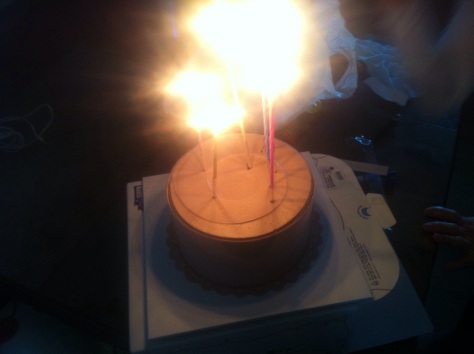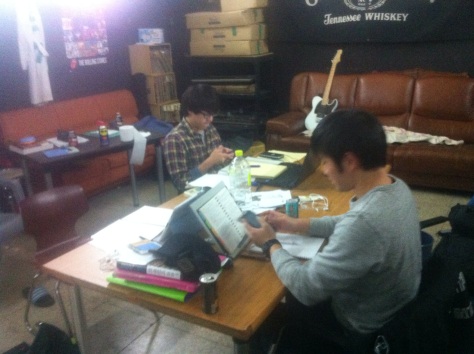Pizza and beer… What could be better?
At the fish market
Who Hates Dog Pictures?
Final Week of Video Project #2
After shooting the footage last week, I went into the editing process.
This was the final outcome of my endeavors.
The most difficult part of this editing process was the rapid succession of different shots starting at 3:53.
In order to give the gunshot scenes the necessary effects, I had to find the necessary transitions. Unfortunately, none of the editing programs that I had access to had the right effect I was satisfied. So I had to find a blank white picture and place it in between these short scenes. The blank pictures could only last less than half a second.
Another difficult part of editing this video was synchronizing and coordinating the music and gunshot noise. I used a program called audacity. It was fairly simple to cut and edit these audio files.
At first I used a program called VSDC editor, since that was what I used for the first video project. However, that program required too much processing power, and my computer could not handle it. I lost two hours worth of work when this happened to me. So when I switched over to Windows Movie Maker, it was definitely much easier to finish this video.
All in all, I’m glad the video ended up like it did. I’ve learned much about the world of video editing, and in the future, I am confident that I will not be clueless like I was before this class.
Second Week of Video Project 2
For this week, we decided on which type of video we wanted to shoot. The one we agreed on was the Dear Sister skit from SNL.
This is the video we chose to parody.
I took the role of director, cameraman, and editor. I felt that by choosing to take on these burdens, I would be free from the burden of having to appear on camera. My teammates did a great a job on the camera, so I suppose it all worked out in the end.
Shots of the main actors on-screen holding a gun is a recurring theme throughout the video. There had to be careful consideration for the type of shot we chose.
Blood is another recurring shot within the video. In order to show that, one of our members went out and bought a bottle of ketchup to portray blood.
There were also very funny scenes that I hope to include in the video. Possibly in a blooper reel.
This concludes the self-reflection for the second week.
First Week of Group Project #2
This week was not very exciting or productive. We gathered together and discussed a variety of ideas. The idea which got the most votes from my group members was an idea to shoot a video of a sort of restaurant or cafe tour. Since we are four members, we would shoot four different locations with each member briefly introducing their favorite location.
The Language of Film
The first shot that Wohl discusses is the Who shot. Who shots are answered with the close-up shot, Close-up shots give viewers an intimate view of the actor on screen.
The second shot is the What shot. It shows what is happening in the shot and is best conveyed by the medium shot. Medium shots provide enough distance from the subjects eyes to move the focus off of the actor but close enough to see what they are doing. An example of a What shot would be something like this:
This was shot using the medium shot. It shows enough distance to see what the subjects are doing.
The third shot is the Where shot. The where question is nearly always answered with a Long Shot (LS), sometimes a medium long shot (MLS) or a shot even further away than an LS such as a wide shot (WS) might do the trick.
The LS shows a subject in an environment. An example of this would be:
http://www.youtube.com/watch?v=QupgCCG56lY
This shot was taken using the long shot. It shows the subject of the show walking across the location of the scene.
Next is the When shot. The when question is tricky, especially when trying to simplify it to a single shot type. When can mean what period in history, how long before or after an important story event, or it can mean at what point in the overall story arc. The when shot is answered by the extreme-long shot (ELS or XLS), which shows the subject traversing such a vast space that there is a sense of how much time it will take.
Next he discuses the Why shot. This question points to the internal decision making of your subject, and when you want to delve into someone’s thoughts, the classic shot to use is an extreme close-up (ECU or XCU or sometimes BCU for big close-up).
A close-up gives the viewer the sense that they are in an intimate relationship with the subject, when you get even closer, it’s like moving right inside the subject’s head. The audience goes from relating to the subject as other to identifying with the subject his or herself.
Next is the How question. How shots are the opposite of Why shots. This question is very external and is usually answered using either medium close-ups (MCU) of a subject performing a physical action or a series of CUs or ECUs of specific actions.
And finally, the With Whom shot shows shots with two or more subjects. Scenes containing more than two subjects will require other, wider shots to illustrate the relative dynamics of all subjects.













































